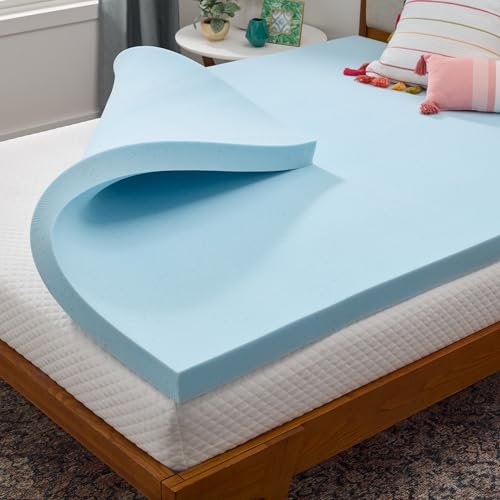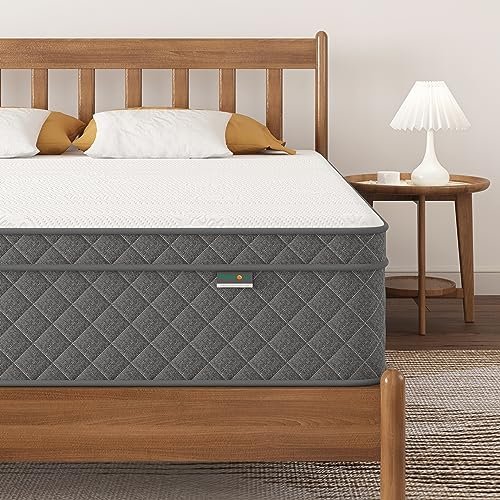
Unraveling the Mystery: How Wide is a King Bed Frame (And Why It Matters!)
So, you’re dreaming of a spacious king-size bed, envisioning luxurious comfort and plenty of room to stretch out. That’s fantastic! But before you get swept away by visions of plush pillows, there’s a crucial question to answer: How wide is a king bed frame, really?
It’s a common point of confusion, and for good reason. Most people know the standard king mattress dimensions, but the frame is a whole different beast. Don’t worry, we’re here to clear up the mystery with a friendly, detailed guide, ensuring your dream bed fits perfectly in your space.
The Big Reveal: King Bed Frame Width Explained
Let’s cut right to the chase:
A Standard King Mattress is typically 76 inches wide by 80 inches long.
However, a Standard King Bed Frame will almost always be wider than 76 inches. Why? Because the frame needs to encompass the mattress, and it includes elements like side rails, a headboard, and potentially a footboard, all of which add to the overall footprint.
Generally, a Standard King Bed Frame will measure anywhere from 78 to 82 inches wide.
* Simple metal frames might be on the narrower end (77-78 inches).
* Standard upholstered or wood frames usually fall in the 78-82 inch range.
* More elaborate designs with chunky side rails, built-in nightstands, or winged headboards can easily push the width to 85 inches or even more!
And what about the longer, narrower cousin?
A California King Mattress is typically 72 inches wide by 84 inches long.
For a California King Bed Frame, you can expect a similar increase in width over the mattress size.
* A California King Bed Frame typically measures between 74 and 78 inches wide.
* Again, more decorative or substantial designs will be wider, potentially reaching 80 inches or beyond.
The golden rule: The bed frame is always wider than the mattress it holds. Always account for those extra inches!
Why the Difference? Understanding Bed Frame Components
It’s helpful to understand why frames are wider. It’s not just arbitrary; it’s due to their construction:
- Side Rails: These run along the long edges of the bed and support the mattress. They have thickness (wood, metal, upholstery) that adds to the overall width.
- Headboard: Even if it’s just a simple panel, a headboard is designed to extend slightly beyond the mattress width for a finished look. Winged or upholstered headboards can add significant width.
- Footboard: Similar to the headboard, a footboard will extend past the mattress, contributing to the frame’s total width.
- Platform & Storage Features: Some modern platform beds have a wider base for stability or built-in storage drawers, which can make them considerably wider than a traditional frame.
Standard King vs. California King: A Quick Width Comparison
This is a common point of confusion. Let’s clarify:
- Standard King: Wider (76″ mattress) and shorter.
- California King: Narrower (72″ mattress) and longer.
So, if you’re truly prioritizing maximum width for sleeping space, a Standard King mattress and its corresponding frame will be your pick. If you’re taller and need more length, a California King is better, but remember it shaves off 4 inches of width compared to a standard king.
Measuring for Success: How to Ensure Your King Bed Frame Fits
Now that you know king bed frames are wider than the mattress, it’s time to measure your space like a pro. Don’t just eyeball it – precision is key!
Step-by-Step Instructions:
-
Measure Your Room’s Total Dimensions:
- Grab a measuring tape, notepad, and pencil.
- Measure the length and width of your bedroom from wall to wall.
- Note the location of windows, doors, and any built-in features (closets, vents, radiators). You’ll need clear paths to these.
-
Account for Existing & Future Furniture:
- If you already have nightstands, dressers, or a desk, measure their dimensions.
- Sketch out your ideal room layout. Where will your nightstands go? How wide are they? How much space do you need to open dresser drawers or closet doors?
-
Determine Ideal Walk-Around Space:
- This is CRUCIAL. You need to be able to comfortably walk around your bed.
- Aim for at least 24-36 inches (2-3 feet) of clear space around the sides and foot of the bed. This allows for easy movement, making the bed, and vacuuming. Less than 24 inches can feel cramped and make the room feel small.
-
Measure the Frame’s Exact Dimensions (If You Have a Specific One in Mind):
- NEVER assume a frame’s dimensions. Even if it’s called a “King,” manufacturers vary.
- If you’re eyeing a specific bed frame online or in a showroom, always check the full product specifications for its exact overall external width, length, and height. This includes the headboard and footboard dimensions.
-
Don’t Forget Doorways and Hallways:
- This is a common oversight! Measure the width and height of all doorways, stairwells, and hallways that the bed frame components will need to pass through to get into your bedroom. A beautiful frame is useless if it can’t enter the room.
Smart Tips for Choosing the Right King Frame
- Always Prioritize Exact Measurements: We can’t stress this enough. Your tape measure is your best friend.
- Visualize with Painter’s Tape: Once you have the exact dimensions of your desired frame, use painter’s tape on your floor to outline its footprint in your bedroom. This gives you an incredibly accurate visual of how much space it will take up. This step is invaluable!
- Consider Style:
- Minimalist metal or platform frames often have the smallest overall footprint.
- Upholstered frames, especially those with wingback headboards, add significant width.
- Frames with built-in storage or thick, rustic wood designs will also occupy more space.
- Think About Your Routine: Do you need space for yoga in the morning? Do you have pets that jump on and off the bed? Consider your daily activities around the bed.
- Factor in Nightstands: If you plan on having nightstands, remember they will reduce your “walk-around” space significantly. Make sure your chosen bed width leaves enough room for your nightstands and your essential clearance.
Common Mistakes to Avoid
- Assuming Frame Width = Mattress Width: This is the #1 mistake! You now know better.
- Forgetting Headboard and Footboard Width: These are often the biggest contributors to the frame’s overall width, especially decorative ones.
- Ignoring Doorways and Hallways: A frame that looks perfect online might not fit through your front door or up your stairs. Measure twice, regret once (or never!).
- Not Measuring Your Room Accurately: “Eyeballing it” is a recipe for disaster. Take precise measurements of your room, including any architectural features.
- Underestimating Clearance Needs: You might squeeze a bed into a room, but if you can’t comfortably walk around it, open drawers, or access windows, you’ll regret it. Always aim for that 2-3 feet of clearance.
Conclusion: Plan Smart, Sleep Soundly!
Choosing a king-size bed is an exciting step towards ultimate bedroom comfort. By understanding that king bed frames are always wider than their mattresses and diligently measuring your space, you can avoid frustrating surprises and ensure your new bed is a perfect fit.
Take your time, measure carefully, and visualize your space. With a little planning, you’ll soon be enjoying the spacious luxury of your king bed, perfectly situated in your beautifully arranged bedroom. Happy dreaming!
Frequently Asked Questions(FAQ)
Q. What is the standard width of a king bed frame?
A. A standard King size mattress is 76 inches wide. The bed frame itself will always be wider than the mattress to accommodate the mattress, bedding, and the frame’s structural components. A typical standard king bed frame can range from approximately 78 to 82 inches wide, depending on its specific design and materials.
Q. How much wider is a king bed frame compared to the mattress?
A. Generally, a king bed frame will add an extra 2 to 6 inches to the width of the 76-inch standard king mattress. This additional width accounts for the frame’s rails, upholstery, or decorative elements. For example, a minimalist platform frame might only add 2-3 inches, while an upholstered or paneled frame could add 4-6 inches or more to the overall width.
Q. Is there a difference in width between a King and a California King bed frame?
A. Yes, there is. A standard King mattress is 76 inches wide, while a California King mattress is 72 inches wide. Consequently, a California King bed frame will be narrower than a standard King bed frame. A California King frame typically ranges from 74 to 78 inches wide.
Q. Does the design or style of the bed frame affect its overall width?
A. Absolutely. The design significantly impacts the final width. Minimalist platform frames or metal frames tend to be closer to the mattress width (e.g., 77-80 inches). Upholstered frames, particularly those with thick side rails or a winged headboard design, can add several inches, potentially pushing the total width to 82-86 inches or even more for very ornate styles.
Q. What is the typical range of widths for a king platform bed frame?
A. King platform bed frames are generally designed to be more compact and support the mattress without a box spring. For a standard 76-inch wide king mattress, a platform frame’s width typically ranges from 77 to 80 inches. Some can be slightly wider if they feature a built-in headboard or specific side panel designs that extend beyond the core frame.
Q. Do headboards or footboards add to the overall width of a king bed frame?
A. While a headboard or footboard is part of the overall bed structure, they primarily affect the length or height dimensions. However, some headboards, especially those with “winged” designs or extended side panels that wrap around the bed, can indeed add to the overall width of the bed frame assembly at its widest point. The main side rails of the frame dictate the core width.
Q. What factors should I consider when measuring my room for a king bed frame’s width?
A. When measuring, always account for the frame’s external dimensions, not just the mattress size. Consider wall space, proximity to other furniture (nightstands, dressers), doorways, and crucial walking paths around the bed. It’s important to measure the exact space you have available and compare it to the specific dimensions provided by the bed frame manufacturer. Don’t forget to account for any side tables or lamps you plan to place next to the bed.
Q. Are there “oversized” or custom king bed frames that are much wider than standard?
A. Yes, while less common, custom-made or specialty oversized king bed frames do exist. These might be designed to accommodate a larger mattress (like an Alaskan King, which is 108 inches wide, or a Wyoming King, 84 inches wide) or simply feature very elaborate, wide side rails and upholstered panels. Such frames can easily exceed 90 inches or even 100 inches in width. Always verify specific dimensions for these unique pieces, as they are not standard.
Related Articles
7 Top Full Size Bed Frames: What is the Dimensions of a Full Size Bed Frame and More!
Getting a good night’s sleep often starts with the right bed, and for many, a full-size bed is the perfect sweet spot between a twin and a queen…
How Much Is a King Size Sleep Number Smart Bed
How Much Is a King Size Sleep Number Smart Bed? Your Guide to Understanding the Investment Recommended Product: Select Comfort Air Bed Chamber for Sle…
How Much Does a Sleep Number 360 Smart Bed Cost
How Much Does a Sleep Number 360 Smart Bed Cost? Recommended Product: Sven & Son Classic Adjustable Bed Base — head and foot lift, massage, under-…



